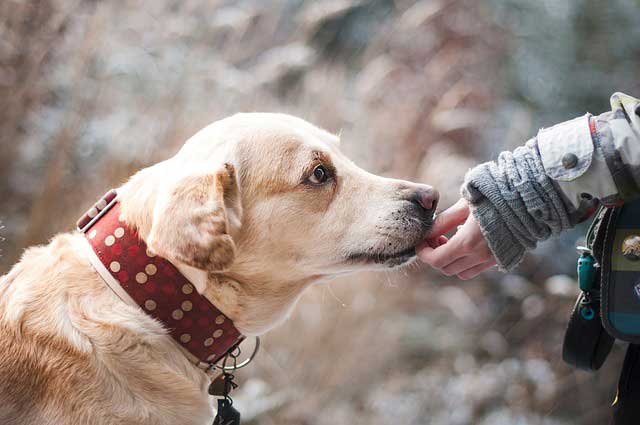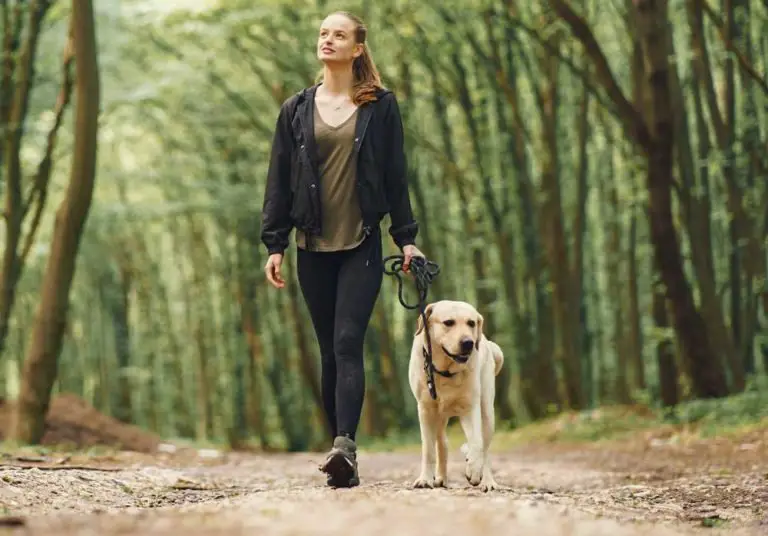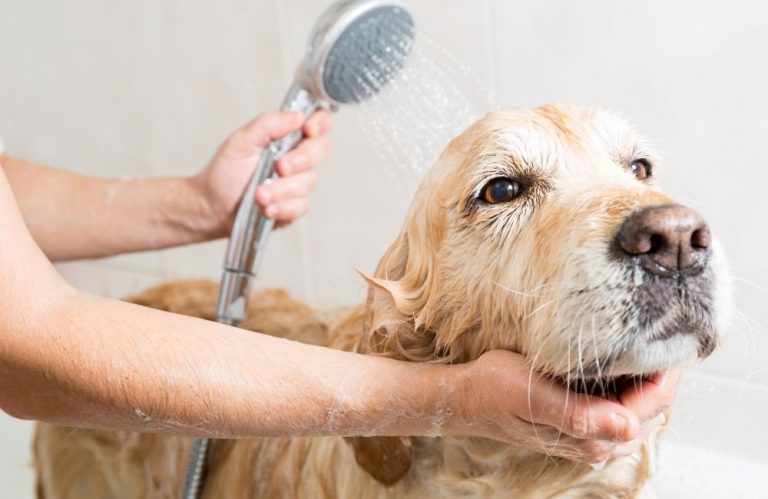How To Cope With A Naughty Labrador
A Labrador retriever makes one of the most intelligent canines. That’s why these dogs have increasingly been winning the hearts of most dog lovers around the world.
Currently, Labradors sit at the top of the list of the most popular dog breeds in the US and UK. That’s according to the 2019 stats released by the American Kennel Club (AKC).
While there’s a lot to admire in them, Labradors can have a mind of their own. Sometimes they will ignore your command to follow theirs, pull the leash, and engage in many other annoying behaviors.
As a Lab owner, it’s necessary to have an in-depth understanding of how to deal with these dogs in different situations. So, what exactly should you do when your Labrador gets rebellious?
Luckily, there are things you can do to cope with a naughty Labrador. However, to manage your dog more effectively, it’s wiser to begin by understanding the possible causes of the unwanted behavior. From that point, you can figure out the best approach to deploy to prevent or manage the condition.
Signs that your Labrador is Naughty
Before we proceed any further, it’s worth knowing that “naughtiness” is a concept borrowed from human characterization. However, we know that dogs don’t behave the same way as humans.
Therefore, naughtiness doesn’t manifest in dogs in the exact manner it does in humans. It’s up to you to know the behaviors that qualify your canine as naughty. Here are signs that your four-legged friend is probably naughty.
- Pulling the leash
- Ignoring your command
- Jumping on people
- Chewing and destroying stuff around the home
- Sneaking out frequently without you knowing
- Rough play
One or several of these signs show naughtiness in dogs. However, dogs don’t all behave in the like manner. Some will manifest naughtiness in other ways not mentioned above.
Therefore, as a Lab owner, it’s up to you to create a close companionship with your furry friend. This way, it gets easier to notice any slight behavioral changes in your lovely fur baby.
Possible Reasons For A Naughty Labrador
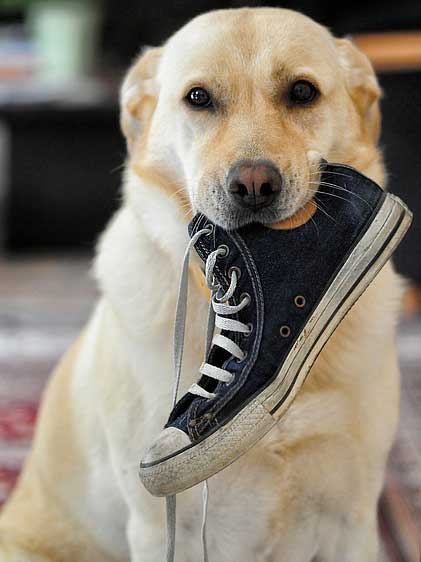
Labrador retrievers are amazing dogs with a personality that’s greater than life. Typically, Labs are gentle, clever, eager to please, and more. That’s way far from being naughty. However, that doesn’t mean you don’t have a role to play as a pet parent.
Without employing the necessary efforts, even the most obedient and gentlest Labrador can become disobedient and unruly. Here are some of the things that may contribute to your dog becoming naughty.
Inadequate Physical and Mental Stimulation
Labrador retrievers belong to the sporting group of dogs. That’s the same class with Golden retrievers, Irish setters, Pointers, and more. Originally, Labs were to serve as companions for fishermen. They were to help in retrieving ducks and other related tasks.
Although their roles might have evolved over the years, modern Labs still feature the same genetic makeup as their ancestors. They have the same level of energy, instinctual needs, and other similarities. That explains why your Labrador regularly needs adequate physical and mental stimulation.
Without physical and mental exercise, your Lab will opt for destructive behaviors as a way of venting out the excess energy. Adequate physical and mental stimulation will keep your pet healthy, calm, and well-behaved.
Lack of Training
Unless you train your Lab, it’s impossible to end up with a canine who conducts himself in the manner you want. Dogs are not born knowing English or French. If you don’t teach your pet some cues, there’s no way he will sit once you command him to sit.
We also have to understand that dogs have inborn traits. Unfortunately, not everything they carry in their genes will produce desirable behavior. A good example is jumping on visitors.
If you don’t train your Labrador (or any other dog) that jumping on visitors isn’t right, he will grow up jumping on anyone who comes about. That’s just one of the many annoying behaviors you will have to deal with if you don’t train your Labrador.
Lack of Attention
A dog is a social being. That’s where we get the phrase “men’s best friend.” As the closest companions, dogs deserve to get our time. Before you visit a breeder or an animal shelter for a Lab, or any other dog, ensure that you are ready to create time for your canine.
Being too busy for your pet may prompt him to look for ways to draw back your attention. Any dog can take a desperate move provided that it will yield the results they want. But it doesn’t have to go that far—create time to show your pet some love.
Most pet parents do the mistake of giving their new pet more attention at the expense of ignoring their long-time furry friends.
Once you bring in a new pet, ensure that you don’t deny your existing Lab the attention you were giving at first. Like humans, dogs get jealous. After all, you don’t want your Lab to make life harder for your new puppy in her new environment.
Reinforcing the Wrong Behavior
As aforestated, dogs don’t speak the language of humans. The only way you are going to encourage good conduct in canines is by reinforcing the appropriate behavior.
By now, everyone should be knowing that shouting to a dog is not a way of letting them know that whatever they are doing is wrong. A shout will only make your dog fear you and lose their confidence. Experts encourage a positive reinforcement approach for training.
Dogs will associate a reward or praise with the manner of conduct that came just before it. For instance, once you give your Lab a treat after jumping on you, he will associate it with jumping on people. Therefore, whenever in need of the snack, he will jump on you or someone else as a way of triggering the reward.
One of the common mistakes that Lab caregivers make is bribing the dog to behave well. While it may provide a short term solution, it will only make things worse in the future.
For example, you might get tempted to give your Lab something to eat as a way of stopping him from howling. While the treat may keep his mouth busy for a while, it will establish another need for howling in the future on top of what’s already causing it.
Separation Anxiety
All dogs enjoy spending time with their loved ones. The more time you spend with your dog, the stronger the bond between the two of you is likely to become.
Separation anxiety occurs when a dog is separated from his attachment figure for longer than he’s used to. According to experts, no dog should be left home alone for more than ten hours. Some Labs may not stay alone even for a tenth of this time before developing anxiety.
Leaving your Lab alone in the house for an extended period may be one of the reasons why your dog is portraying naughty behavior. No matter how comfortable and relaxed your dog seems when you are leaving the house, separation anxiety may settle in moments after you shut the door behind you.
What follows is chewing up stuff, scratching windows and doors, finding a way to get out, and more. If your dog tends to get naughty when you are away, separation anxiety could be the cause.
Other Possible Causes
Although inadequate exercise, lack of training, denial of attention, reinforcing the wrong behavior, and separation anxiety cause naughtiness in Labs, we have other potential causes. Even the things you least expect, like diet and location may cause behavioral problems in your Labrador.
How To Keep Your Labrador From Being Naughty
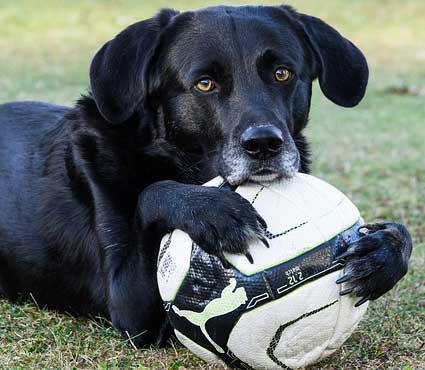
Find Time To Exercise Your Pet
Labradors are energetic dog breeds. They need daily exercise as much as they need food and water. Fortunately, there are many ways of exercising your lovely pet.
For instance, if you live near a water body, your Lab will appreciate regular swimming sessions as part of their routine. For those that don’t live near such areas, a dog pool brings the fun right to their homes.
If you aren’t willing to invest in a pet pool, morning runs, walks, and play are a few of the many ways you can keep your canine physically and mentally fit.
For the busy days when it’s hard to get enough time to spend with your pet, an interactive toy is one effective way to keep your adorable Lab physically and mentally active.
Don’t Underestimate The Power of Training
Dog training is a stage you can’t afford to have your furry friend dodge. It goes a long way to shape the behavior of your dog. It’s one effective way of cultivating the desirable behavior when discouraging the bad. Training works best when you start it at the puppy stage.
According to experts, a puppy who’s eight weeks old is eligible for training. Keep the classes short and more engaging. After all, just as with kids, puppies aren’t mature enough to “chew” everything you train them for hours. It’s wiser to schedule short sessions but have them more frequently than having one long class.
If your Labrador is past puppyhood, don’t worry—Labs are intelligent dogs. They also have a strong drive to please their human partners. Once you introduce your Lab to training, he will ensure that he does his best to make you happy and win your approval. That’s what makes them trainable at any age.
Training doesn’t just involve teaching them cues. After all, you want your dog to behave appropriately all the time, with and without your command. The good thing is that you don’t necessarily need an expert to train your dog provided that you follow the right procedure and training tips.
Your Attention Is Key
Giving your Lab some attention makes them feel appreciated and recognized in the family. It’s an effective way of creating a stronger man-dog relationship.
The good thing is that or four-pawed friends don’t demand much. Even with the busiest schedule, you can squeeze in a session for interacting with your pet. Still, interaction can happen during training or exercise. That makes it possible to kill two birds with one stone.
When interacting with your pet, it’s even easier to get to know them better. Once you understand your pet very well, it’s easy to know when something is not right. You will be able to know when your dog is sick even before the illness gets to an advanced stage. That keeps your veterinary bills low and your pet’s health up to par.
Proper Rewarding
A reward plays a central role in shaping the behavior of your canine. While it’s a powerful tool for reinforcing the desired conduct, it’s important to note that it can do more harm than good when not administered properly.
For a reward to serve the intended purpose effectively, timing is a critical aspect. It has to come immediately after the desired behavior. You want your dog to relate the reward with a certain behavior.
The reward should also be consistent. In other words, you can’t praise the dog for behaving in one way and later on after behaving in the opposite manner. It leaves the dog confused about what exactly you want of him.
Find Ways To Keep Your Pet Relaxed When You Are Away
If the naughty behavior in your dog is a result of separation anxiety, you can manage it easily by keeping him more comfortable when left alone. If your dog is used to being with people most of the time, there’s no way you can wake up and leave him alone all day long and expect to get everything in place.
Begin by leaving your dog alone for short sessions and gradually increase the time you are away. For instance, you can leave for a minute or two, come back again, increase the time at smaller intervals until when your pet is comfortable to remain alone for long.
An engaging toy will also go a long way to keep your pet from becoming anxious when alone. A good puzzle toy stuffed with treats will keep your dog’s mind engaged until you are back. If nothing seems to work, you can try over-the-counter supplements as a way of keeping your Lab calm until you are back home.
When Nothing Seems To Be Working
The fact is that it’s possible to get even the naughtiest Labrador to start behaving well. However, at times things may not work no matter the approach you use.
If nothing seems to bear fruits, you can consider bringing in experts to help. A dog trainer or behaviorist may help you identify the cause of the problem by using their expertise.
Final Verdict
Although Labradors can at times become naughty, the good news is that it’s possible to get your dog to behave in the exact way you want of him. However, it’s a process that requires dedication and patience.
Usually, it’s a process that doesn’t need the intervention of an expert. However, if you have trouble identifying the cause of the problem, you can bring in experts to help.

